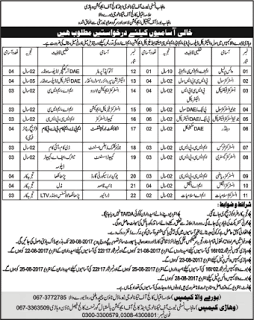Saad Iqbal | 🗓️Modified: February 26, 2018 | ⏳Read Time: 6 min | 👁Post Views: 1464
The shear strength of the final asphalt product is affected by the quality of the asphalt prime coat applied.
And I was amazed after finding the impact of climate on
construction activities and materials used therein. The use of MC 30 cutback asphalt prime coat was a surprise factor for me but after finding its properties and features I was surprised and decided to share my experience with you.
Contents
By going through this article you will be able to understand :-
- What is Asphalt Prime Coat?
- Functions of Asphalt Prime Coat
- Why Asphalt Prime Coat is needed?
- Qualities of a good Asphalt Prime Coat?
- Application of Asphalt Prime Coat in Cold Weather & Cut Back primers?
- Process of Applying Asphalt Prime Coat
What is Asphalt Prime Coat?
Asphalt Prime coat is actually a low viscous slow-setting grade of
asphalt emulsions that are diluted with water and applied between the non-stabilized bases including but not limited to Water Bound Macadam (WBM) and succeeding asphalt course.
 |
| What is Asphalt Prime Coat? |
Also Read
Functions of Asphalt Prime Coat
The functions and advantages of the Asphalt Prime Coat are as follows:-
Plug in the Capillary Voids
The above stated heading is actually the main objective in addition to the other objectives of the asphalt prime coat. So the asphalt prime coat is applied as water proofing layer on the base course so as to protect the underlying layers from wet weather and thereby avoiding any migration of moisture across layers.
Integrity of the Granular Baser
The second most important objective of the asphalt prime coat is to bind the loose material in the base course by coating the material particles and thus hardening and toughening the base surface to provide a work platform.
Binder for intermediary layers
The granular base course cannot directly adhere with the succeeding HMA (Hot mix Asphalt) and will therefore can cause shear failure if the thickness of the asphalt is not adequate. So in order to have proper adhesion with the base course the asphalt prime coat or primer must be sprayed on it.
To Reduce Dust
As stated above, that due to primer coat the fines in the base course are confined within the base layer either granular or WBM. The confinement of these fines would produce an environmental friendly impact making construction activities more human friendly and dust free.
Why Asphalt Prime Coat is needed?
I am glad you asked this question as it is the question of this century lolz. Anyhow, as per my experience, the main need of the asphalt prime coat is because of the failure of the asphaltic emulsions (HMA) to wet the granular base course thereby creating a poor adhesion. Emulsions having high binder content or quick set slurry are always susceptible to such outcomes. And then came this superficial adhesion agent called asphalt prime coat.
Qualities of a Good Asphalt Prime Coat / Primer
Penetration
All the objectives of the prime coat can only be met if it is penetrated, enough. By enough it means completely up to the depth of the base course but usually it is found that penetration of 1-2 cm is enough. A good quality primer or prime coat chemical must be composed of small particles that are having low surface tension in an emulsion allowing it to penetrate into the capillary voids.
Usually in a common primer the asphalt emulsifier is diluted with water making a dispersion of discrete particles. But the emulsifier actually increases the surface tension and thus avoiding penetration.
Curing / Setting
It is required for the Primer to completely cure before covering the base course with the Hot Mix Asphalt (HMA). Through experiments it is found that the emulsified asphalt cures earlier than the MC or SC cutbacks. But earlier curing or setting would make handling and application difficult which is always a problem for the cold areas. And therefore thinning and heating is a pre-requisite for such primers.
Absorbing
The primer must be completely absorbed within the base course but if after 24 hours the primer is not absorbed it must be removed by blotting with sand.
Primer in Cold Weathers & Cutback Asphalt Primers
Mostly in colder regions, the asphalt prime coat is often deleted by increasing the thickness of the HMA. But it is the responsibility of the designer to judge and advice the optimum option to either delete the asphalt prime coat or use the cutbacks. Cutbacks asphalt asphalt prime coat bitumen consists of penetration grade asphalt cement and a diluent or cutter of medium volatility like kerosene. The cutback agent or cutter is added to reduce or cutback the viscosity of the bitumen. The mixture thus obtained is often termed as cutback bitumen. Medium Cure Cutbacks penetrated deeper than the conventional emulsified asphalts diluted with water but the efficient functioning of cutbacks primer requires it to be mixed properly with the granular base. .
Process of Applying Asphalt Prime Coat
- Cleaning and Clearing of the Base Surface.
- Sprinkling water over the base surface to ensure good penetration of the emulsion or prime coat but avoid over watering.
- Spraying of the Prime Coat using the standard emulsion sprayer that is already properly calibrated.
- Allow penetrating and drying. Usually traffic must not be allowed for more than 24 hours but if traffic must use the road a thin layer of sand can be spread.
- Final surfacing is done on the next day.
So whats Next…??
So I have tried to elaborated enough on Asphalt Prime Coats, its types, features, how to apply it etc. But may be I have missed something which you may know. So why not share your experience with the world. So talk about asphalt prime coat.



















